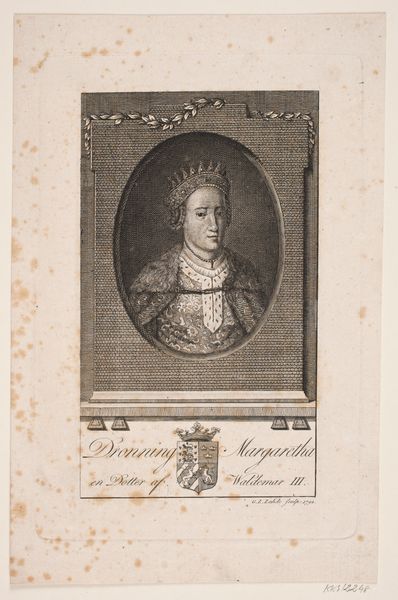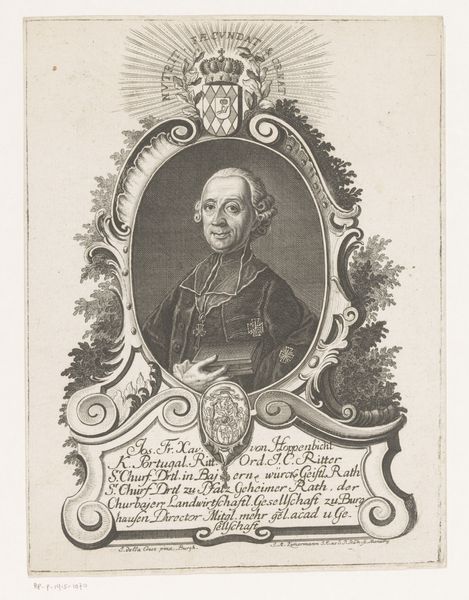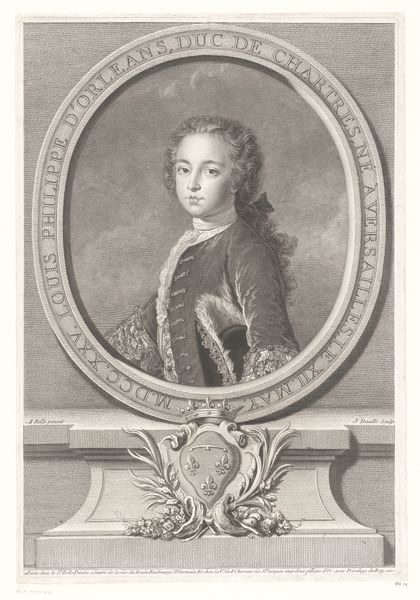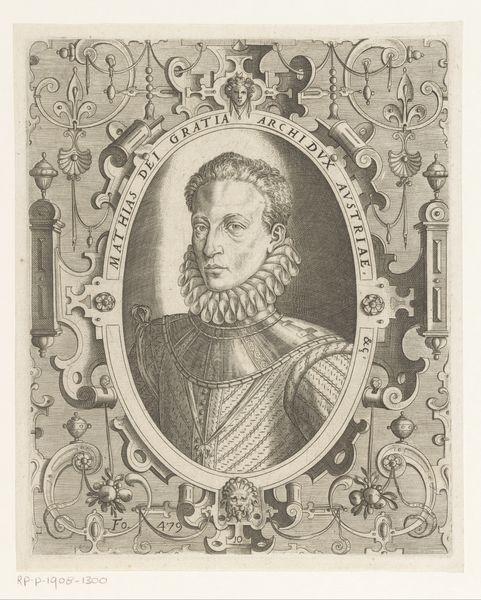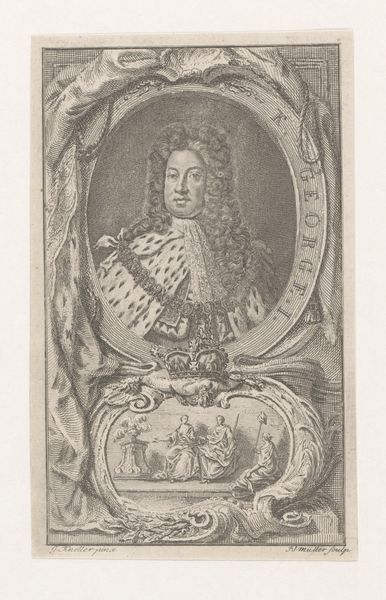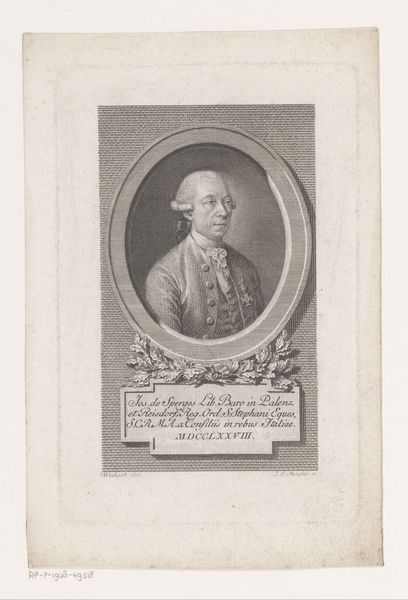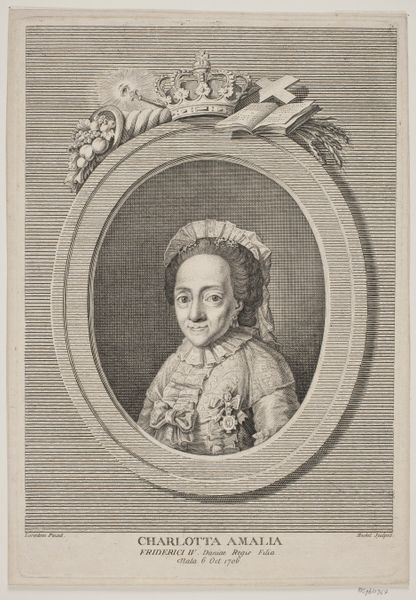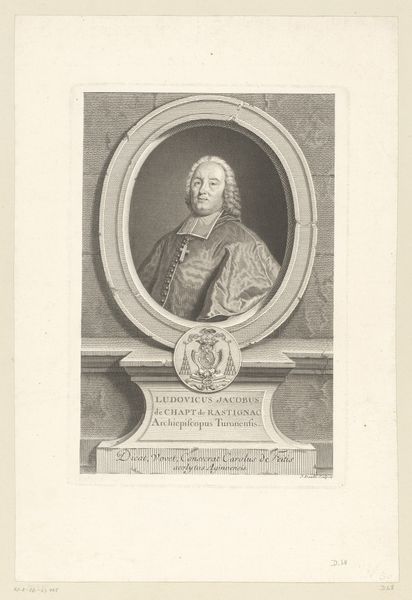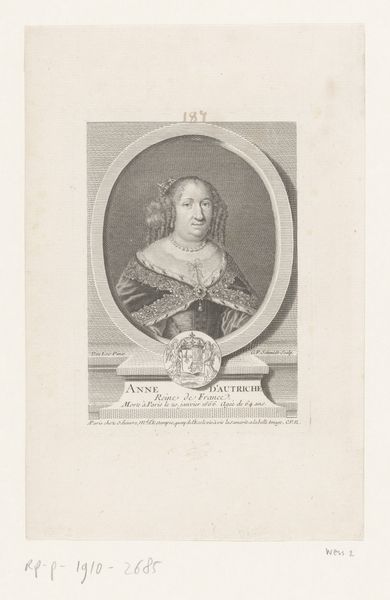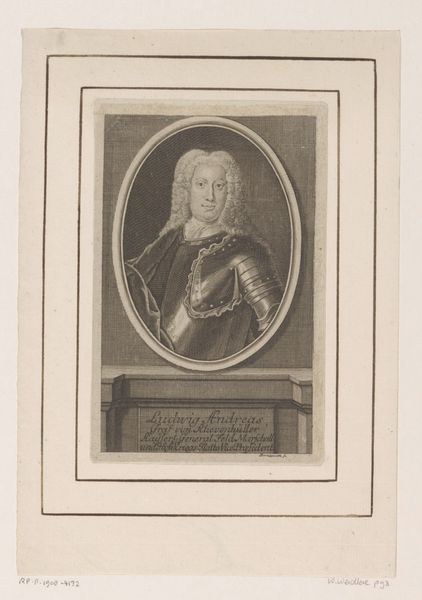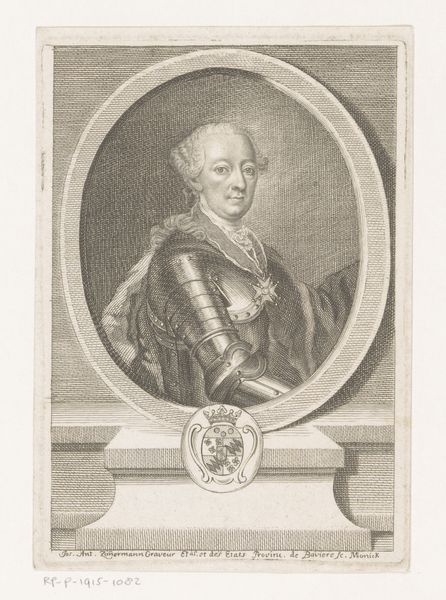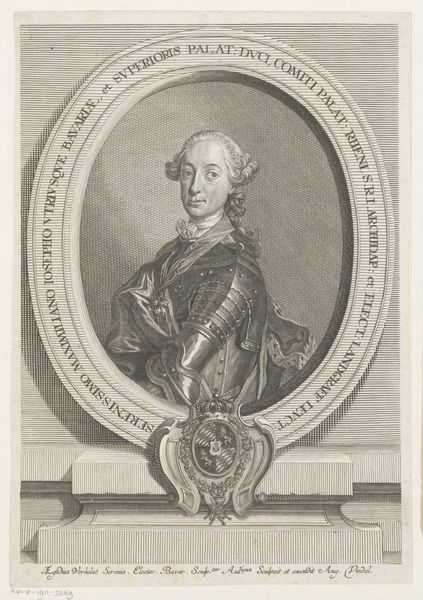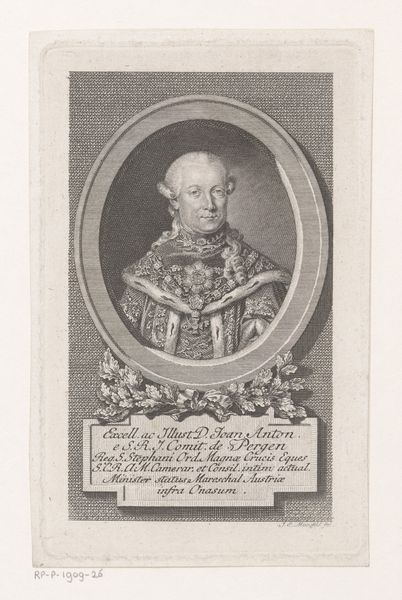
print, engraving
#
portrait
#
neoclacissism
# print
#
pencil drawing
#
history-painting
#
engraving
Dimensions: 178 mm (height) x 117 mm (width) (plademaal)
This portrait of Queen Margaretha was made by Gerhard Ludvig Lahde, using engraving – a printmaking technique. It’s all about the lines. Consider how the artist meticulously etched the image into a metal plate, line by line. This was a labor-intensive process, demanding skill and precision. The density of the lines creates the tonal variations, giving form to the Queen’s face, her elaborate crown, and the regal ermine-trimmed cloak. Notice how the texture of the paper interacts with the ink, softening the overall effect. Engraving was a popular method for disseminating images, making them accessible to a wider audience than an original painting would be. In that sense, this portrait serves as a reminder of the increasing circulation of images, ideas, and goods in the 18th century. It also highlights the labor involved in image production, often overlooked in favor of the “genius” of the artist. By appreciating the craft, we gain a richer understanding of the artwork’s historical context.
Comments
No comments
Be the first to comment and join the conversation on the ultimate creative platform.
